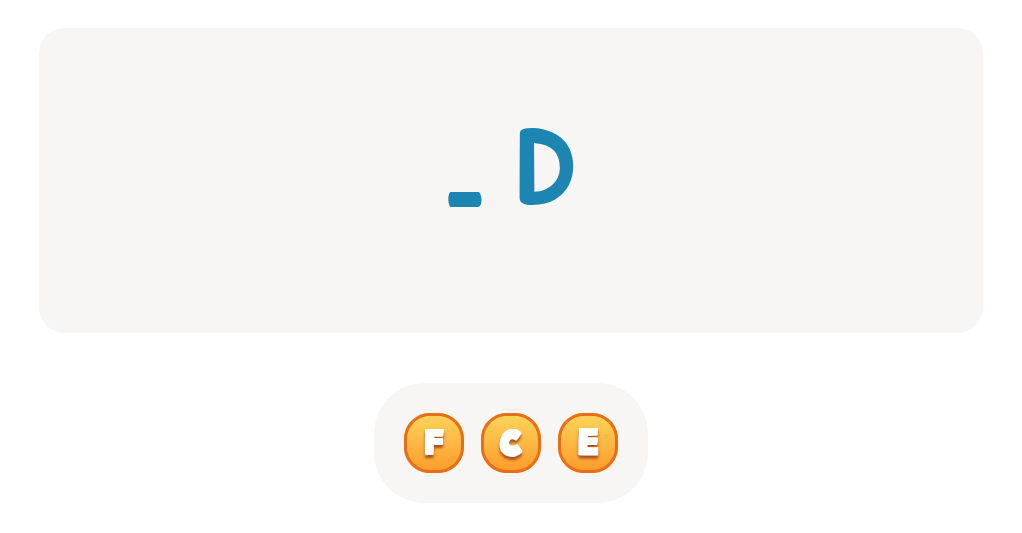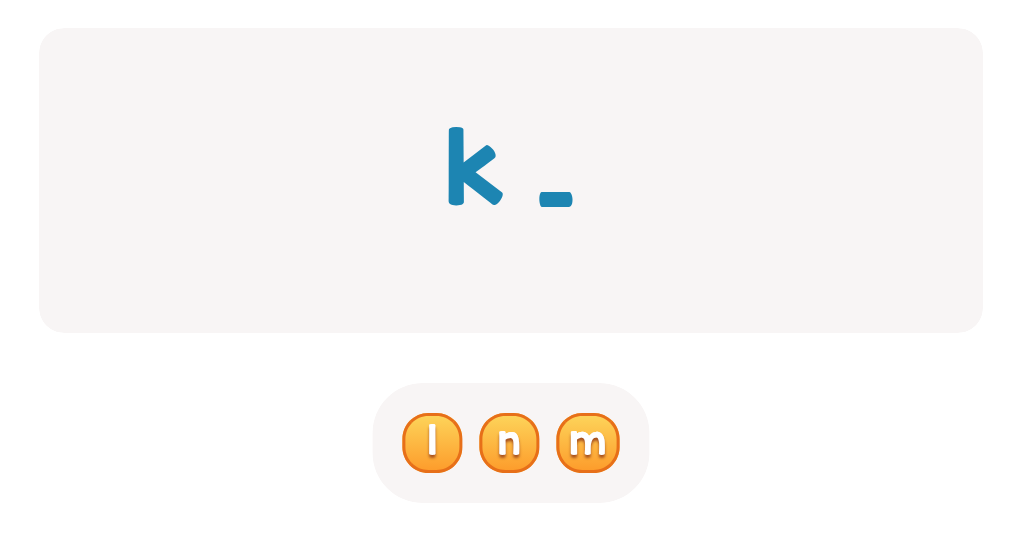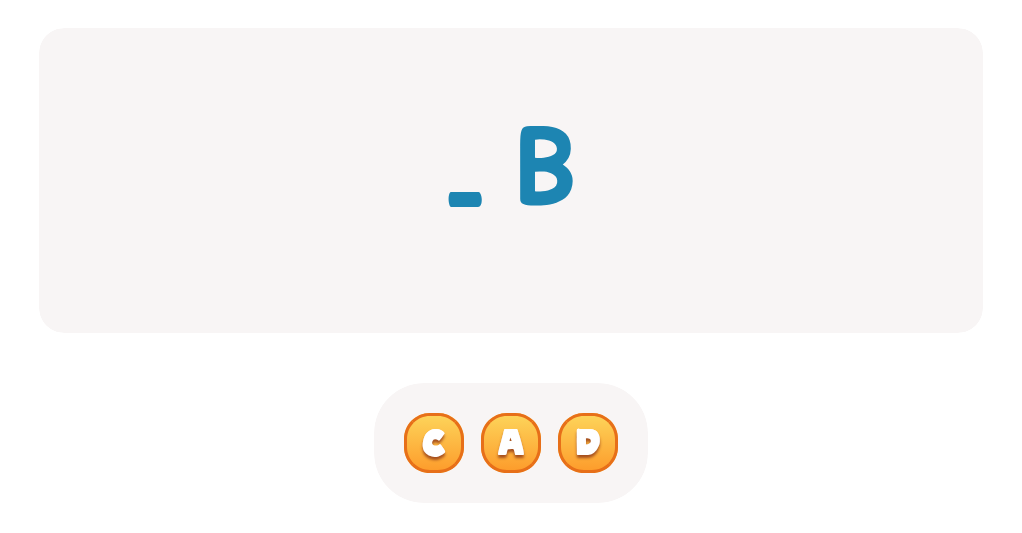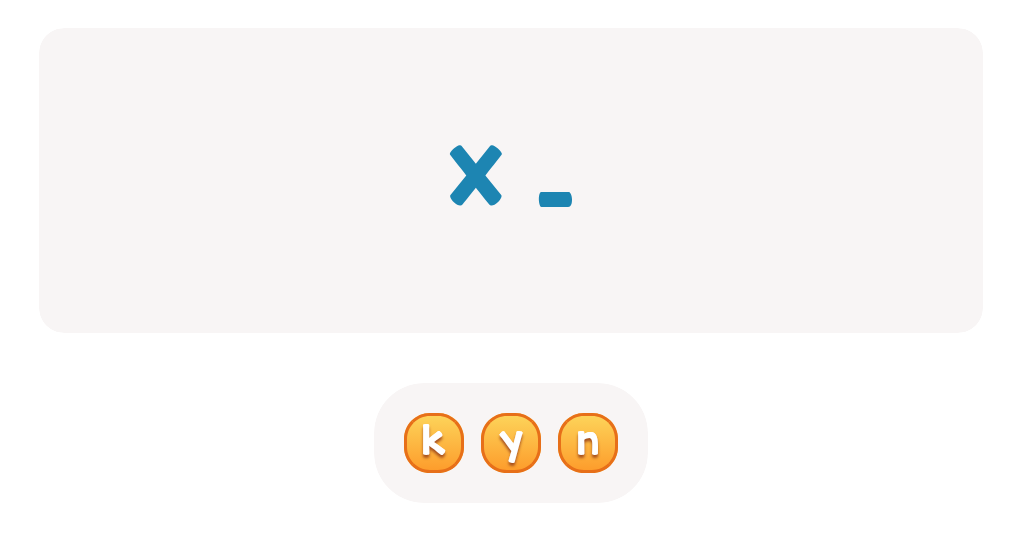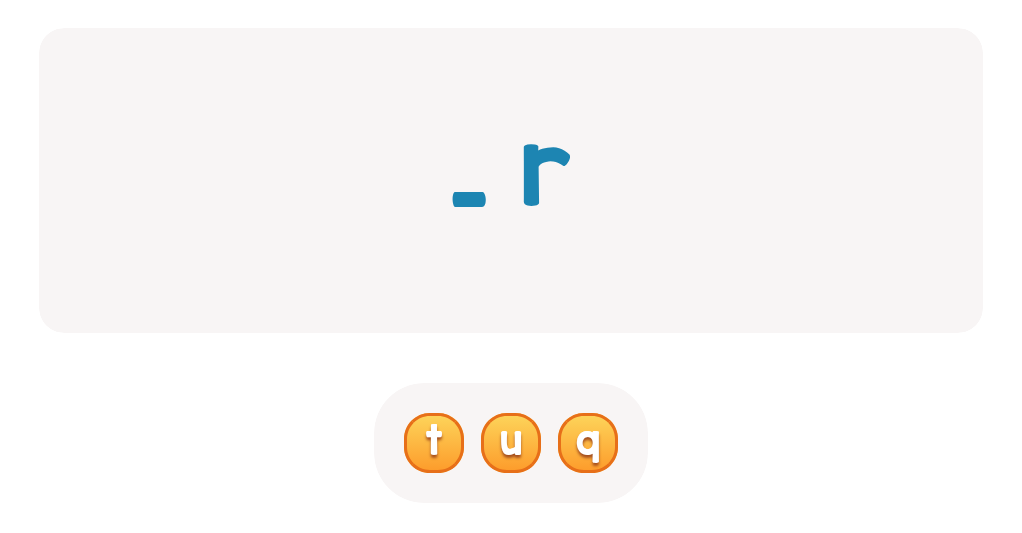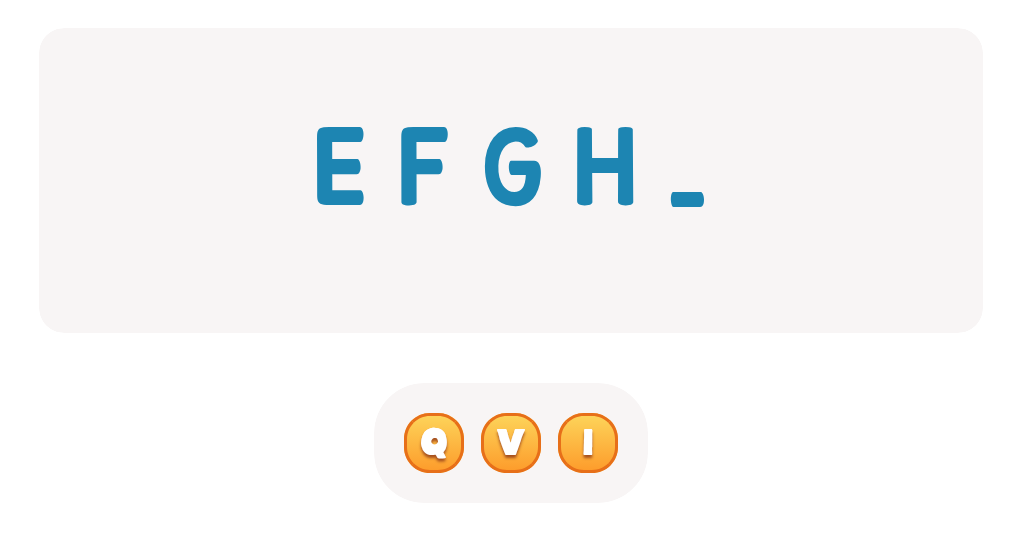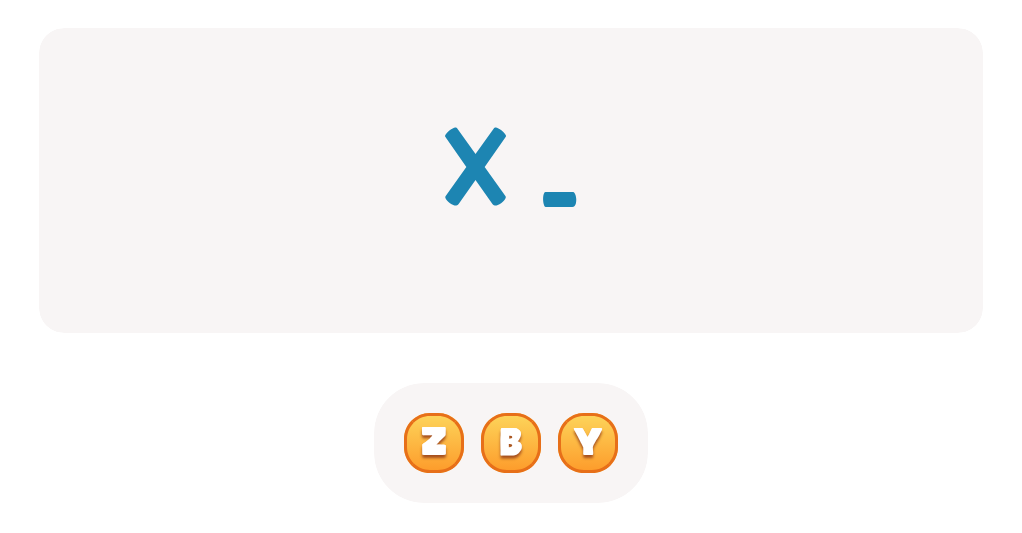Lowercase identification Normal Upper & Lowercase Letters Worksheets
4 filtered results
-
From - To
Our "Lowercase Identification: Normal Upper & Lowercase Letters Worksheets" offer engaging resources to help young learners easily distinguish between uppercase and lowercase letters. Perfect for early grade students, these worksheets are designed to enhance letter recognition, alphabet familiarity, and handwriting skills. With fun, age-appropriate exercises, children can practice matching, tracing, and identifying lowercase letters, laying a strong foundation for reading and writing. Ideal for classroom use or at-home practice, our worksheets support early literacy development and boost confidence in letter identification through interactive and enjoyable activities. Explore our collection for effective, educational fun!
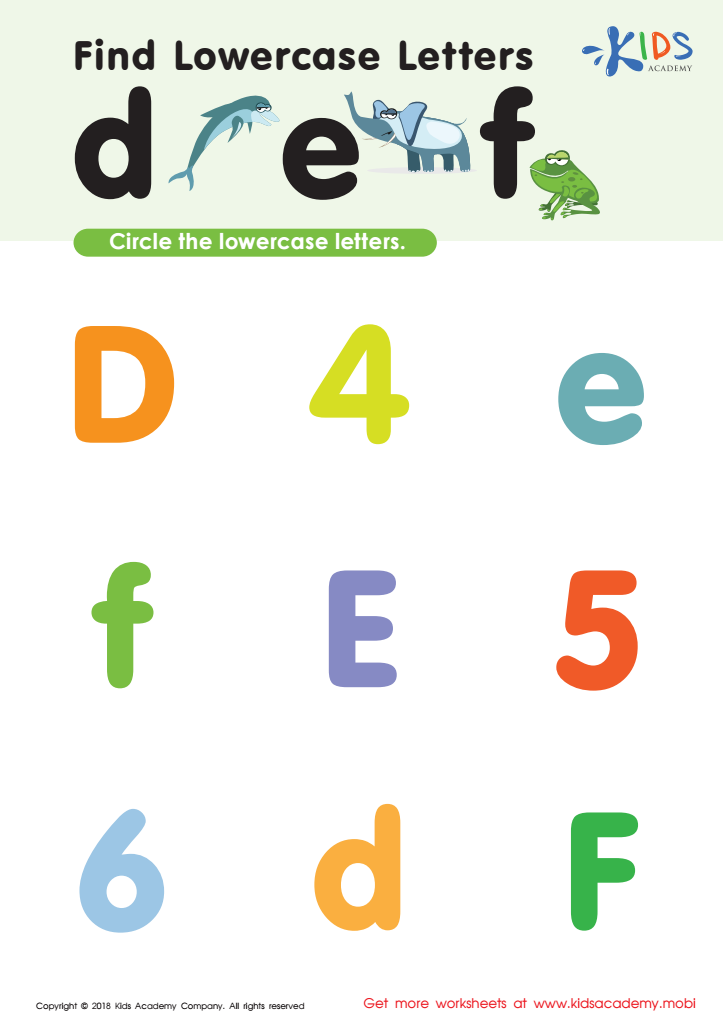

Find Lowercase Letters d e f Worksheet
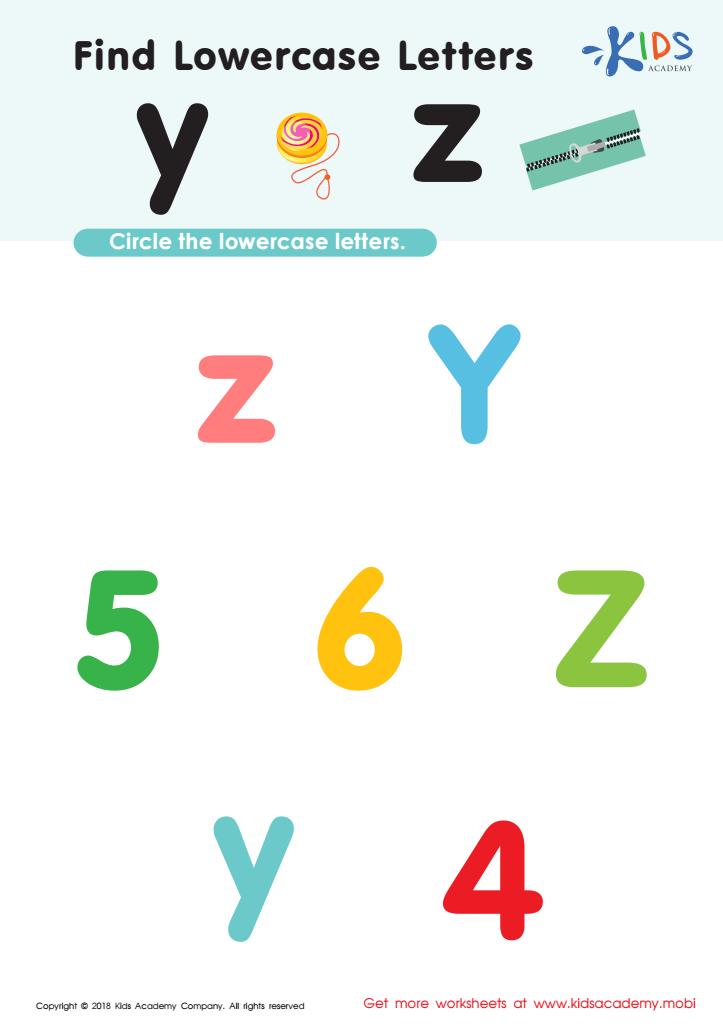

Find Lowercase Letters y z Worksheet
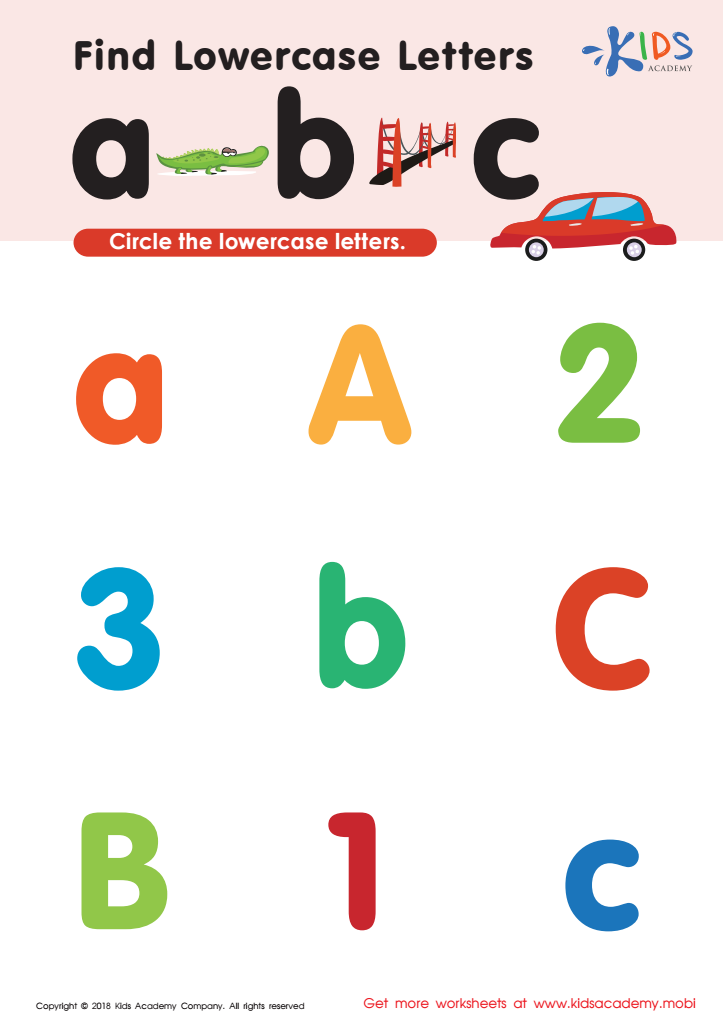

Find lowercase letters a b c Worksheet
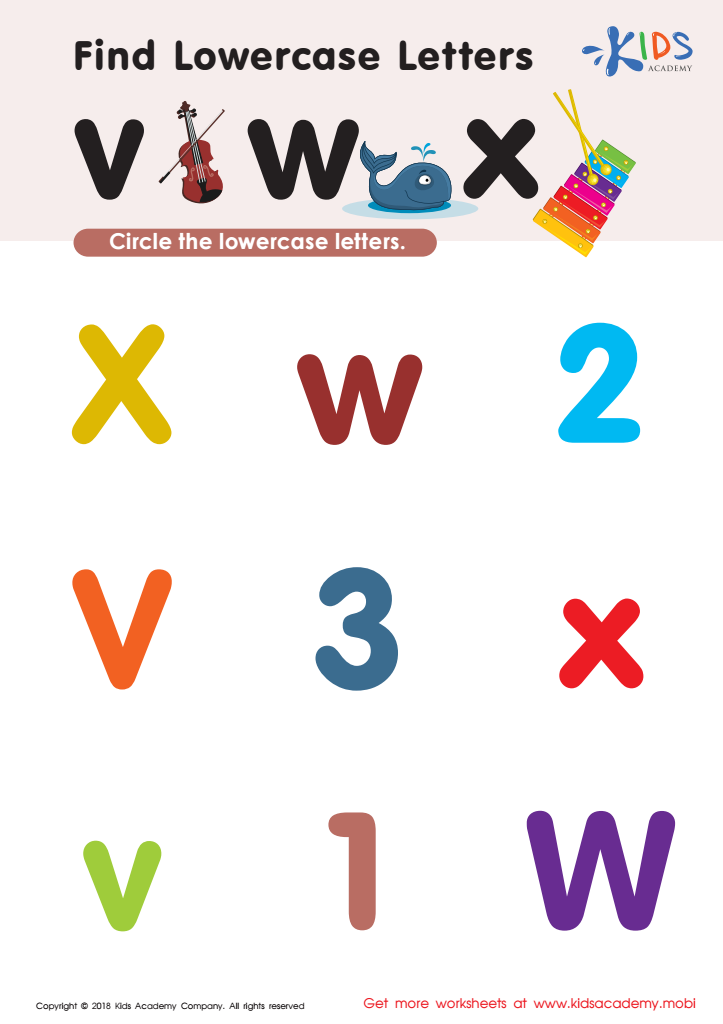

Find Lowercase Letters v w x Worksheet
Understanding both lowercase and uppercase letters is crucial for early literacy development. When young children learn to recognize and differentiate between these letter forms, they lay a strong foundation for reading and writing.
First, lowercase letters make up the majority of text in books and other reading materials. If a child can identify these with ease, reading becomes smoother and more fluent. Familiarity with lowercase letters helps them decode words quickly and accurately, aiding comprehension.
Second, distinguishing between uppercase and lowercase letters improves a child’s overall letter knowledge. This distinction is essential for proper sentence structuring, where uppercase is needed at the beginning of sentences and for proper nouns. This understanding enhances writing skills and overall literacy.
Encouraging children to recognize and differentiate these letters early on fosters better visual discrimination skills, which are fundamental not just in literacy but in understanding patterns and differences in various contexts.
Lastly, being adept at both uppercase and lowercase identification boosts a child’s confidence in their literacy abilities, making learning less of a chore and more of an engaging activity. When parents and teachers prioritize this aspect of learning, they set up children for future success in school and beyond, instilling a life-long love for reading and writing.
 Assign to My Students
Assign to My Students
